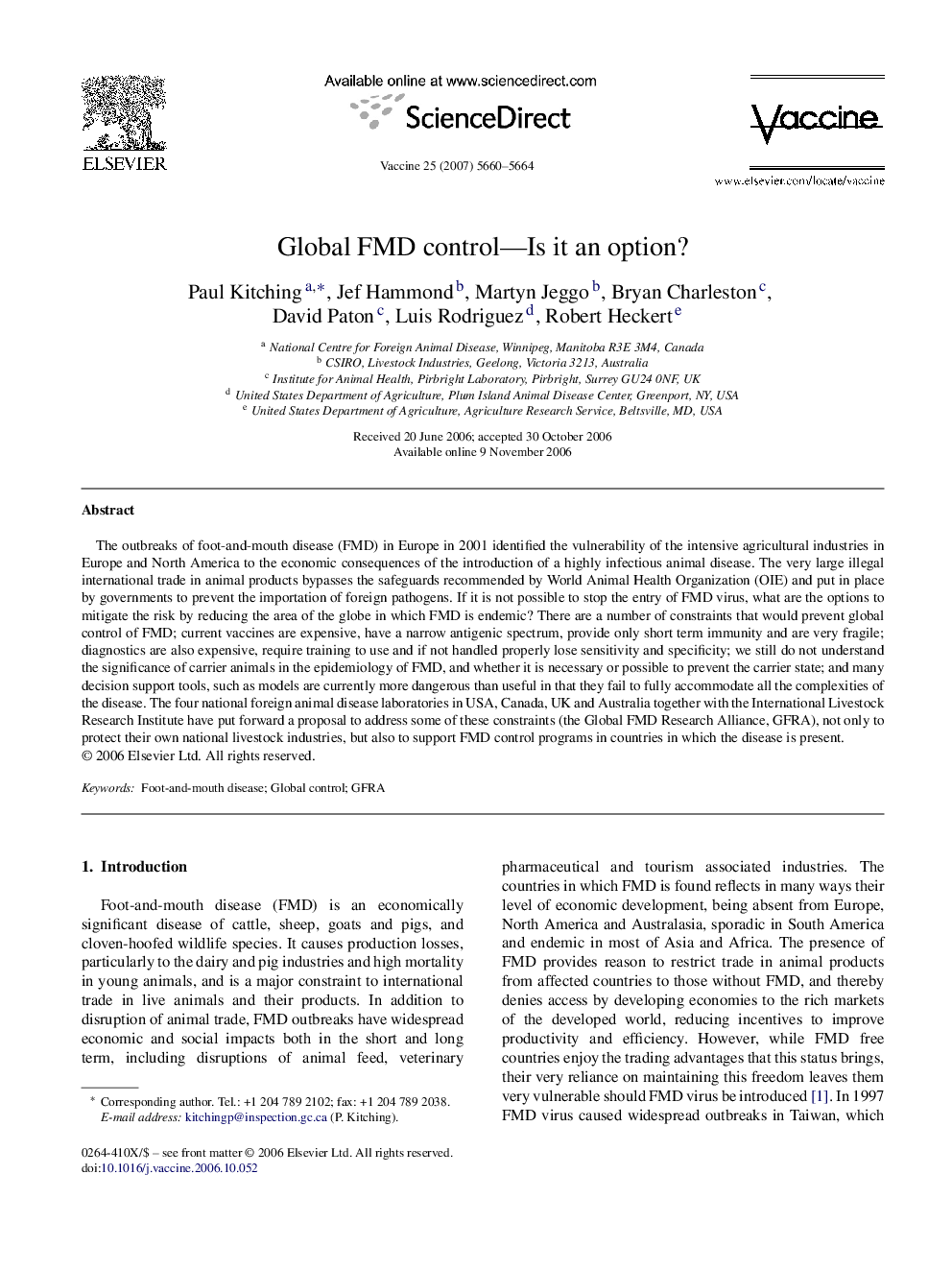| Article ID | Journal | Published Year | Pages | File Type |
|---|---|---|---|---|
| 2409621 | Vaccine | 2007 | 5 Pages |
The outbreaks of foot-and-mouth disease (FMD) in Europe in 2001 identified the vulnerability of the intensive agricultural industries in Europe and North America to the economic consequences of the introduction of a highly infectious animal disease. The very large illegal international trade in animal products bypasses the safeguards recommended by World Animal Health Organization (OIE) and put in place by governments to prevent the importation of foreign pathogens. If it is not possible to stop the entry of FMD virus, what are the options to mitigate the risk by reducing the area of the globe in which FMD is endemic? There are a number of constraints that would prevent global control of FMD; current vaccines are expensive, have a narrow antigenic spectrum, provide only short term immunity and are very fragile; diagnostics are also expensive, require training to use and if not handled properly lose sensitivity and specificity; we still do not understand the significance of carrier animals in the epidemiology of FMD, and whether it is necessary or possible to prevent the carrier state; and many decision support tools, such as models are currently more dangerous than useful in that they fail to fully accommodate all the complexities of the disease. The four national foreign animal disease laboratories in USA, Canada, UK and Australia together with the International Livestock Research Institute have put forward a proposal to address some of these constraints (the Global FMD Research Alliance, GFRA), not only to protect their own national livestock industries, but also to support FMD control programs in countries in which the disease is present.
